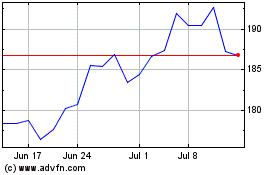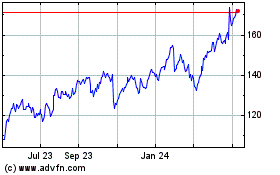By Alistair Barr And Mike Ramsey
Google Inc. designed its self-driving cars to follow the rules
of the road. Now it's teaching them to drive like people, by
cutting corners, edging into intersections and crossing
double-yellow lines.
Humans expect drivers to avoid collisions. But Google's robots
assume the worst and tap the brakes frequently as their digital
"eyes" spot potential dangers, sometimes prompting other drivers to
stop abruptly.
The cars are "a little more cautious than they need to be,"
Chris Urmson, who leads Google's effort to develop driverless cars,
told a conference in July. "We are trying to make them drive more
humanistically."
Google is moving closer to commercializing self-driving cars,
with the hiring earlier this month of auto-industry veteran John
Krafcik as chief executive of its car project. One big remaining
challenge is to make the cars, which have run more than a million
miles on public roads, move more seamlessly among human
drivers.
Since 2009, the cars have been involved in 16 minor accidents.
In 12 of those mishaps, the vehicles were rear-ended. That's a
higher accident rate than the national average, but Google says
national statistics exclude many minor accidents similar to those
its cars have experienced.
Google said it wasn't at fault in any of the crashes. But some
allies say the vehicles' habit of braking to avoid real, but
marginal, risks may play a role.
"Why is it getting rear-ended? It drives like a computer," said
Jen-Hsun Huang, chief executive of Nvidia Corp., which designs
powerful graphics processors that help Google's cars recognize
objects.
Mr. Huang said Google could remedy the problem with "deep
learning" techniques that help computers recognize images and
objects, and then improve over time.
During a recent test drive involving two Wall Street Journal
reporters, the Google Lexus RX450h autonomous vehicle jabbed or
tapped the brakes at seemingly odd times.
In one instance, the Lexus hit the brakes because it interpreted
that a car approaching fast from behind might cut it off as it
passed. The other car didn't do that, creating a sense that the
Google car slowed for no reason.
Another time, the car stopped at a busy T-intersection with
limited views of cross traffic. It waited for about 30 seconds,
began to make a left turn, but stopped in the middle of the
intersection as a woman on the other side of the street walked near
the edge of the sidewalk.
"I think that split-second we were yielding for a potential
person crossing the crosswalk," said Nathaniel Fairfield, a Google
team leader who was conducting the test drive. "Better behavior
there would be to not have stopped abruptly."
Mr. Fairfield logged the incident on a laptop and said Google
would study it to consider changes to the computer instructions
that guide the car. The event was also stored in a library of
driving scenarios that Google uses to test whether changing one
pattern might trigger unsafe behavior in other situations.
Still, Mr. Fairfield insisted that the cautious approach wasn't
causing other drivers to rear-end the autonomous vehicles.
"We clearly are a little jerkier than we would like," he said.
"But all of these cases have been when we are sitting still."
Some drivers around Google's headquarters in Mountain View,
Calif., say they find the cars annoying. They inch forward at T
intersections, pausing regularly to get their bearings. They're
extra careful when turning left because their software calculates a
minimum safe turning distance from oncoming traffic. Humans have a
more instinctive, and higher risk, assessment.
Google's cars used to make wide left turns. But those turns
confused other drivers and felt "weird" to passengers, Mr.
Fairfield said.
By studying human turning patterns, Google saw that people take
corners more directly, turning earlier, "cheating in the turns" as
Mr. Fairfield puts it. So Google baked that into its
algorithms.
Twelve minutes into the test drive, Google's car drifted toward
the center of a two-way street, driving over the double-yellow line
to get around a parked car--the result of another change. Google
once forbid its cars from crossing a double yellow. But that proved
impractical when parked cars blocked the road, and Google's car had
to stop indefinitely.
"It's just unnatural and bizarre," Mr. Fairfield said. "You want
to figure out when the right time is to relax things a little
bit."
At stop signs, Google adopted a "creep" function to show other
drivers its car intends to proceed. Otherwise, at four-way stops it
might continue to wait until the intersection was clear.
The cars still slow down or stop when they're unsure of what's
going on.
Google now is building human flexibility and interpretation into
more of these unusual cases. If a traffic light is out and other
cars are treating the intersection as a four-way stop, Google's
cars will sense that and do likewise.
Write to Alistair Barr at alistair.barr@wsj.com and Mike Ramsey
at michael.ramsey@wsj.com
Subscribe to WSJ: http://online.wsj.com?mod=djnwires
(END) Dow Jones Newswires
September 28, 2015 14:17 ET (18:17 GMT)
Copyright (c) 2015 Dow Jones & Company, Inc.
Alphabet (NASDAQ:GOOG)
Historical Stock Chart
From Aug 2024 to Sep 2024

Alphabet (NASDAQ:GOOG)
Historical Stock Chart
From Sep 2023 to Sep 2024
